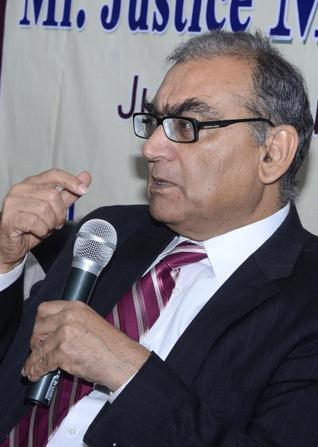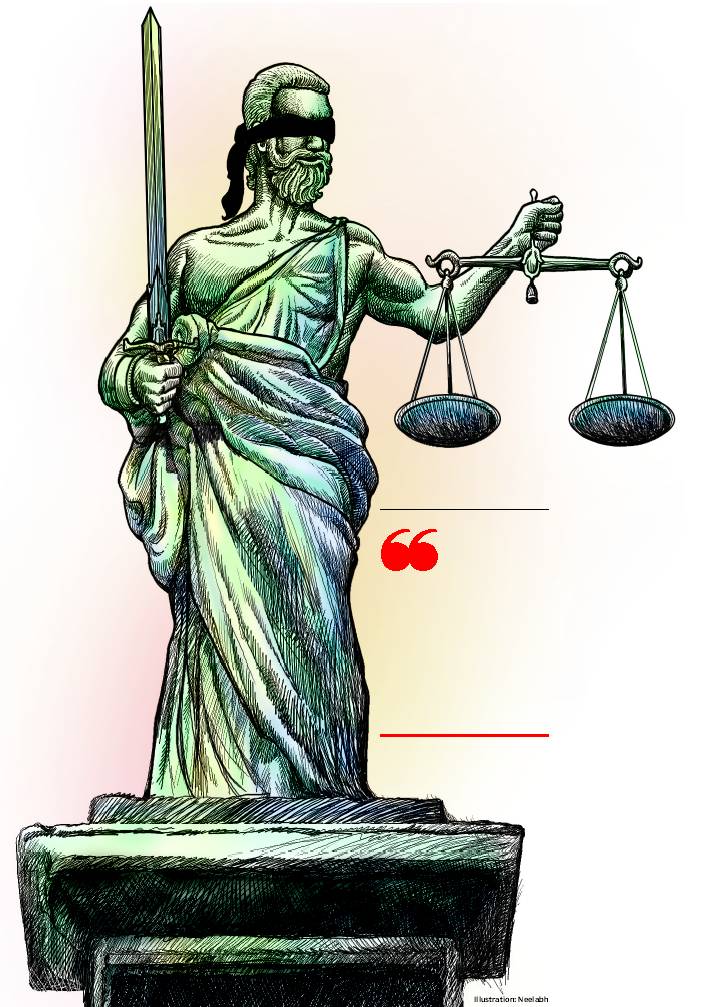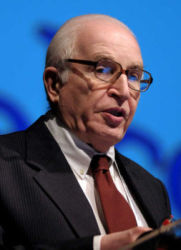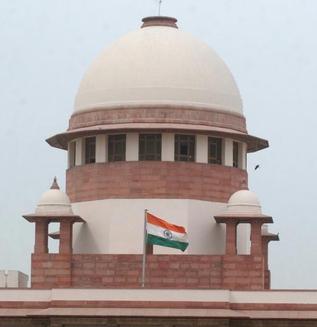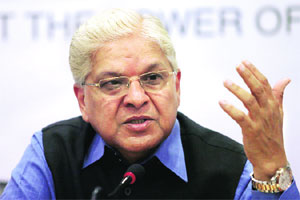
LAW MINISTER – ASHWANI KUMAR
IDEA EXCHANGE- PUBLISHED IN THE INDIAN EXPRESS
In this Idea Exchange, the new Minister of Law and Justice, Ashwani Kumar, speaks about judicial activism, and the right to privacy vis-a-vis the right to information. This session was moderated by Senior Assistant Editor Maneesh Chhibber
Maneesh Chhibber: There is a feeling that the Indian higher judiciary is going into areas that don’t concern judges. How do you intend to check that?
It is absolutely true that over the last couple of years, there is a widely-held perception that there is a treading into other domains by organs of the state whose remit is not that particular sector. It is equally true that what the judges do or say, they believe they say or do so by the command of the Constitution. Now who will determine the outer parameters and the constitutional laxman rekhas? The Constitution confers that right on the judiciary, yet I believe that recent judgments of the Supreme Court, including the one in the 2G spectrum case, have clearly spelt out the Supreme Court’s perspective with regard to interference in policy decisions. The highest court of the land has categorically reaffirmed the proposition that judiciary cannot concern itself with policy making nor can it go into the questions relating to the political domain. But the judiciary has said that it can intervene in the implementation or the manner of implementation of the policy. I don’t think the government has any quarrel with that proposition.
Maneesh Chhibber: It is said that judges get swayed and play to the gallery.
Judges are prone to be concerned with the prevailing environment of the day, yet the constitutional and judicial discipline demands that judges decide as objectively as the brief in front of them permits. In a large majority of the cases, judges do decide fairly. There have been cases where the general feeling has been that the judges have said a little more than what justice demanded but that was a more a function of the style of writing a judgment and style varies from judge to judge.
Amitabh Sinha: The Shah Commission has given its report on the proposed privacy law. What are your views on its recommendations and on the proposed privacy law?
I did take the initiative of establishing a high-powered committee of known experts to discuss the various aspects of the privacy law and the privacy rights that the Constitution confers on its citizens. Our privacy rights are derived from Article 21 of the Constitution. They needed to be translated and enforced through specific privacy legislation. The focus of the commission’s deliberations would have been on how to harmonise the imperatives of privacy protection and the right of the people to know. The right of people to know is as much a part of the constitutional imperative so we need a law which would harmoniously blend these two constitutional imperatives.
Amitabh Sinha: Would you say that the right of privacy, when enacted, essentially needs to be applied in inverse proportion to the public office you occupy? The higher you go up, the less the right to privacy becomes?
The right to privacy in India, culled out from Article 21, is a right that the Constitution recognises as an integral part of our human rights which is non-negotiable. A citizen who is also a public figure may be expected of greater transparency in the conduct of his official duties. But that argument, in my personal view, cannot be used to deny the very basic right to privacy of a public servant. The two rights must move in tandem.
D K Singh: How do you explain the fact that not a single judge has been impeached by Parliament so far? Is it because the judiciary is unblemished or is there some lacunae in the impeachment process which needs to be rectified?
I am really happy that the we have not had to use the impeachment proceedings against judges. Having said that, some people may argue that the difficulty in the impeachment procedure makes it impossible for the procedure to be followed. It’s an argument I accept. But it is in the fitness of things that we have inbuilt defences to ensure that the impeachment mechanism is not abused. If you were to make it easier, we would be vulnerable to the argument that Parliament is using the procedure to make inroads into the independence of the judiciary. It is certainly not my case that the judiciary at every level has an unblemished record. We have noticed cases of judicial aberrations. Up to now, we have left it to the inbuilt mechanisms within the judiciary to deal with such cases. But now that we have a Judicial Accountability Bill, we will, hopefully, establish a more effective legislative mechanism for addressing judicial aberrations.
Seema Chishti: Your government took a radical step on the Lokpal two years ago when you had a 10-member committee to draft the Bill. Would you think about such pre-legislative committees for future legislation?
Certainly, we are enriched by pre-legislative discussions with all stakeholders. I think it is a good thing. Laws are meant for the people and therefore, the more participatory the process of law-making is, the better it is for all. But it is an entirely different thing to say that you could leave the drafting of laws to people outside of the legislatures and Parliament. My view is that the drafting of legislation through Parliament and translating people’s views into the letter of the law must remain the preserve of the legislatures and parliamentarians. And I think my views have been validated by the experience of the past.
Harcharan Singh: Twenty- eight years have passed since 3,000 people were killed in Delhi after Mrs Indira Gandhi’s assassination. Not even five people have been convicted. As the law minister today, what plan do you have to see that justice is delivered faster?
Long unjustifiable delays in dispensation of justice erodes the faith of people in the justice delivery system. Over the last several years, there have been repeated attempts to ensure that affordable and expeditious justice is available to all. There are seven initiatives in the works now to achieve the promise of the Constitution of affordable and expeditious justice. One of my foremost priorities as law minister is to hasten the process of judicial reforms and that would cut the pendency of cases. We have around 3.15 lakh court cases pending in courts. But we are now introducing and reinvigorating the gram nyayalaya justice delivery system and the Lok Adalat system. The criminal justice system is another story all together and I agree with you that it can become very dissatisfying or frustrating or very oppressive. But I want to say something I believe in with all my heart—please do not, in the quest of momentary popularity or appeasing a sentiment, evade the time-tested system of criminal justice which states that presume a man to be innocent until proved guilty. That brings me to another point: trial by media offends the principles of fair trial which is integral to the rule of law. Media trials are unconstitutional. And yet, every day there is a trial by media on every issue. The argument that would be made by the great activists on television every day is that it takes too long to prove a man to be guilty. But is that fair grounds to reject the principle of the rule of law in favour of kangaroo trials?
Harcharan Singh: We had committees and commissions, whether it is the Gujarat riots or the Delhi riots. These commissions take years to gather evidence. What is the use of their findings after so long?
I agree that we need to do a lot more and must bring in amendments and changes in the law. We must adequately staff the legal structures by getting in more judges, more lawyers and courts. It will be my endeavour to try and push through the necessary judicial reforms.
Pranab Dhal Samanta: Where is the government on the proposal for a judicial appointments commission? Your predecessor also wanted to start a conversation with the Supreme Court on moving the two-judge benches to three-judge benches and looking at a permanent five-bench constitutional bench headed by the Chief Justice. Where are you on these issues?
On the second question, I would need to discuss this with the higher judiciary, with the Chief Justice of India. I do recognise that in the last several years, the demand on the judges of the Supreme Court to decide complex issues of constitutional law has increased exponentially and therefore, some kind of structured instrumentality has to be in place to ensure that the best possible judicial decisions are handed down on far-reaching issues without compromising on the judges’ responsibility towards other important litigations pending before them. On the judicial appointments commissions, the consultations with different political parties have taken place. A few details need to be fine-tuned.
Prerna (St Mark’s School, Janakpuri, Delhi): India stands 98 among 175 countries on the corruption index. Judiciary can play a positive role in checking corruption. What are your plans?
I am not sure if any country in the world has been able to completely eliminate corruption but that should not stop us from endeavouring to do so. It would be my endeavour to be a facilitator in the enforcement of anti-corruption laws and ensuring that the enforcement of criminal laws is not oppressive.
Dilip Bobb: What’s your view on Supreme Court judges taking up government-sponsored jobs immediately after retirement?
My personal view, not my view as the minister of law and justice, is that it would be a healthy tradition for judges of the Supreme Court not to accept post-retirement jobs. Having said that, it is equally true that given the complexities of the regulatory regime that we now have to advance our economic and social legislation, there is no substitute for experience. Given also that at the retirement age of 62 years, Supreme Court judges are still active and alert in mind, we need to have some of these wise men on tribunals for a while.
Karishma Kuenzang (EXIMS*): Cartoonist Aseem Trivedi was arrested on charges of sedition. What steps will you take to ensure that freedom of speech and expression and the law of sedition do not clash?
The charge of sedition can only be brought forward in an almost foolproof case. If every spoken word, sometimes in anger or without full reflection on the spur of the moment, is going to lead to a charge of sedition, then I do not know who will be saved from that charge.
Yogesh Rajput (EXIMS): As a former minister of science and technology, why do you think the government gives less importance when it comes to allocation of funds in R&D and science and technology?
The PM accords the highest importance to science and technology. In the 12th Five Year Plan, we have significantly increased public spending on R&D. It used to be less than 1 per cent of our GDP in the 11th Plan. In the 12th Plan, the R&D expenditure, both in the private and public sector, will be increased to about 2 per cent of the GDP, the single highest growth of expenditure in any department.
N P Singh: Should we see the transfer of Mr Jaipal Reddy to this ministry in the context of the PM giving priority to science and technology?
It may well be. I have the deepest respect for Mr Reddy, both for his scholarship and for his ability to read and grasp complex issues of science and technology.
D K Singh: What are your views on Arvind Kejriwal’s allegations that Mr Ranjan Bhattacharya influenced the government during Mr Vajpayee’s prime ministership?
I don’t want to dignify the comments of Mr Kejriwal by my rebuttal or by my comment. I am also not defending Mr Bhattacharya, but if Mr Kejriwal has said anything about an individual based on his information, who am I to comment?
Shishir Tripathi (EXIMS): When Justice Katju was in office, he raised the issue of nepotism in the judiciary.
It’s true that there has been a perception that this is not a healthy practice. I do not know what to say. Does it mean that if somebody needs to be elevated to the judgeship of the High Court, his nephew, son or daughter have to move out of the court? Or does it mean that he should decline to become a judge just because he does not want to deprive his children of the opportunity to practice in court? You need to have a balance on such issues.
Prashant Dixit (EXIMS): Several decisions of khap panchayats have created a furore. Don’t you think that the judiciary should interfere?
The law of the land is supreme and their decision is to be respected by all, be it a khap panchayat or any other panchayat.
Transcribed by Ananya Bhardwaj & Priyanka Sharma
* Express Institute of Media Studies
IDEA EXCHANGE- PUBLISHED IN THE INDIAN EXPRESS
